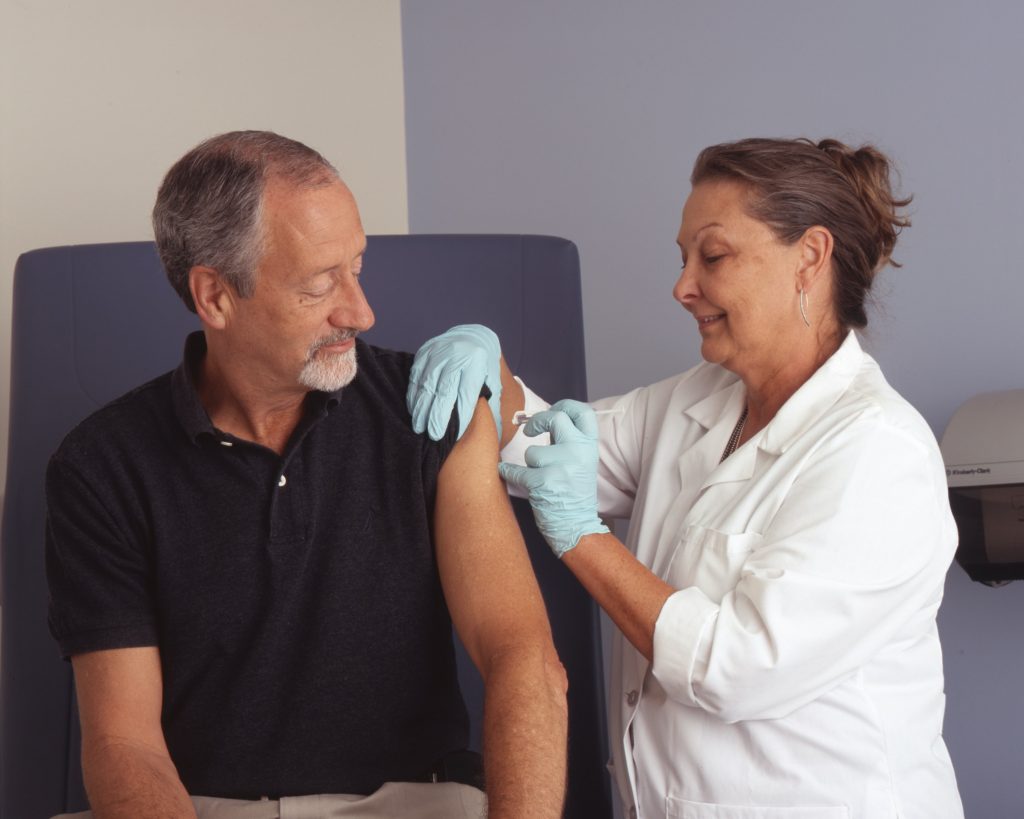Prostate cancer is currently a serious public health problem worldwide, being respectively the second most common cancer in more than half of the countries throughout the world. Alarming data from 2018 show that the frequency of new cases approaches 1.3 million, while the frequency of deaths approaches 1.3 million while the frequency of new deaths approaches about 359,000 men [1]. Despite the evident advances in terms of diagnosis and prognosis of these diseases, there is still a high frequency of deaths from prostate cancer [2]. Given this scenario, numerous efforts have been made to implement models of artificial intelligence and machine learning in order to reduce the time to diagnosis and rapid institution of appropriate pharmacological treatment [3]. Prostrate cancer has a higher incidence rate in men over 40, with men of African descent developing this cancer at younger ages [4]. It is thought that prostate cancer can partially be prevented by lifestyle – eating less processed foods and regularly getting exercise most common – as it has the highest incidence rate in North America, northwestern Europe, Australia, and on Caribbean islands. It is still not clear whether there are more granular suggestions to avoid prostate cancer. Although there is some correlation between certain lifestyle changes improving prostrate cancer’s development, more research is needed to check whether obesity, smoking, exposure to chemicals such as Agent Orange, and vasectomies are strong risk factors.
Artificial intelligence and machine learning cover a spectrum of algorithms configured through a broad and representative database and statistical techniques to analyze specific properties and determine actions [4]. In the particular case of urology, in addition to specific algorithms for the diagnosis and prognosis of these diseases, there are implemented treat-to-target models, such as intervention based on brachytherapy or beam radiation therapy. A study conducted by Teber et al. [5] shows that a supervised logistic regression model can predict the number of seeds needed for low-dose radiation brachytherapy, contributing to a better use of resources in the management of prostate cancer [5].
Another application of AI models that has been gaining notoriety is the application in robotic surgery [6]. Karimi et al [7] developed a system to augment the visualization of the Da Vinci console through AI applications to automatically display the location of malignant regions classified by probability heat map. The system uses the intraoperative TRUS to record MR for real-time anatomical visualization of the patient during robotic surgery, in addition to the prostate segmentation in TRUS, these features allow the surgeon to visualize suspicious lesions in real time on the console display, thus avoiding unnecessary surgical manipulations [7].
Despite significant advances, there are still major challenges for the implementation of AI and ML models to overcome within the diagnosis and prognosis of prostate cancer, and these challenges are characterized by the need for multidisciplinarity between radiologists, pathologists and biologists in medical sciences with the objective of elaborating models that consider clinical, laboratory, imaging and histopathological findings [8]. In this way, future perspectives on the implementation of AI models are mainly related to genomics-associated algorithms that can understand the biological diversity among patients and their respective association with medical imaging data, resulting in reduced time to diagnosis and access to the appropriate treatment for these patients [1].
Citations
[1] Goldenberg SL, Nir G, Salcudean SE. A new era: artificial intelligence and machine learning in prostate cancer. Nat Rev Urol. 2019 Jul;16(7):391-403.
[2] Fenton JJ, Weyrich MS, Durbin S, Liu Y, Bang H, Melnikow J. Prostate-Specific Antigen-Based Screening for Prostate Cancer: Evidence Report and Systematic Review for the US Preventive Services Task Force. JAMA 2018;319(18):1914–1931.
[3] American Cancer Society, “Prostate Cancer Risk Factors.” Accessed: Nov. 14, 2022. [Online]. Available: https://www.cancer.org/cancer/prostate-cancer/causes-risks-prevention/risk-factors.html
[4] Darcy AM, Louie AK, Roberts LW. Machine Learning and the Profession of Medicine. JAMA. 2016 Feb 9;315(6):551-2
[5] Mohareri O, Ischia J, Black PC, Schneider C, Lobo J, Goldenberg L, Salcudean SE. Intraoperative registered transrectal ultrasound guidance for robot-assisted laparoscopic radical prostatectomy. J Urol. 2015 Jan;193(1):302-12
[6] Teber D, Guven S, Simpfendörfer T, Baumhauer M, Güven EO, Yencilek F, Gözen AS, Rassweiler J. Augmented reality: a new tool to improve surgical accuracy during laparoscopic partial nephrectomy? Preliminary in vitro and in vivo results. Eur Urol. 2009 Aug;56(2):332-8.
[7] Karimi D, Samei G, Kesch C, Nir G, Salcudean SE. Prostate segmentation in MRI using a convolutional neural network architecture and training strategy based on statistical shape models. Int J Comput Assist Radiol Surg. 2018 Aug;13(8):1211-1219.
[8] Goldenberg SL, Nir G, Salcudean SE. A new era: artificial intelligence and machine learning in prostate cancer. Nat Rev Urol. 2019 Jul;16(7):391-403.



